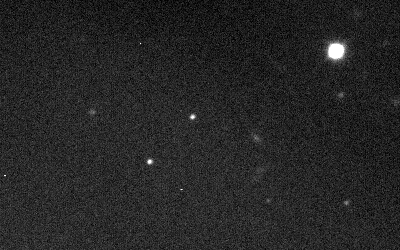Ymir (moon) on:
[Wikipedia]
[Google]
[Amazon]
Ymir , or Saturn XIX, is the second-largest retrograde irregular moon of Saturn. It was discovered by Brett J. Gladman, et al. in 2000, and given the temporary designation S/2000 S 1. It was named in August 2003 after Ymir, who in 

MPEC 2000-Y15: S/2000 S 1, S/2000 S 2, S/2000 S 7, S/2000 S 8, S/2000 S 9
(2000 Dec. 19 ephemeris)
(by Scott S. Sheppard) Astronomical objects discovered in 2000 Discoveries by Brett J. Gladman Irregular satellites Moons of Saturn Norse group Ymir Moons with a retrograde orbit {{natural-satellite-stub
Norse mythology
Norse, Nordic, or Scandinavian mythology, is the body of myths belonging to the North Germanic peoples, stemming from Old Norse religion and continuing after the Christianization of Scandinavia as the Nordic folklore of the modern period. The ...
is the ancestor of all the Jotuns or frost giants.
It takes 3.6 Earth years to complete an orbit around Saturn. Of the moons that take more than 3 Earth years to orbit Saturn, Ymir is the largest, at about in diameter; Ymir is also the second largest member of the Norse group
The Norse group is a large group of Retrograde and prograde motion, retrograde irregular satellites of Saturn. Their semi-major axis, semi-major axes range between 12 and 27 Gm, their inclinations between 136° and 178° and their Orbital eccentr ...
, after Phoebe.
Spectral measurements from '' Cassini–Huygens'' show that Ymir is reddish in color, unlike Phoebe's gray color, suggesting a separate origin for this moon. It shows a similar light curve
In astronomy, a light curve is a graph (discrete mathematics), graph of the Radiance, light intensity of a celestial object or region as a function of time, typically with the magnitude (astronomy), magnitude of light received on the ''y''-axis ...
as Siarnaq and has a triangular shape, rotating in a retrograde direction about once every 11.9 hours.


Notes
References
External links
MPEC 2000-Y15: S/2000 S 1, S/2000 S 2, S/2000 S 7, S/2000 S 8, S/2000 S 9
(2000 Dec. 19 ephemeris)
(by Scott S. Sheppard) Astronomical objects discovered in 2000 Discoveries by Brett J. Gladman Irregular satellites Moons of Saturn Norse group Ymir Moons with a retrograde orbit {{natural-satellite-stub